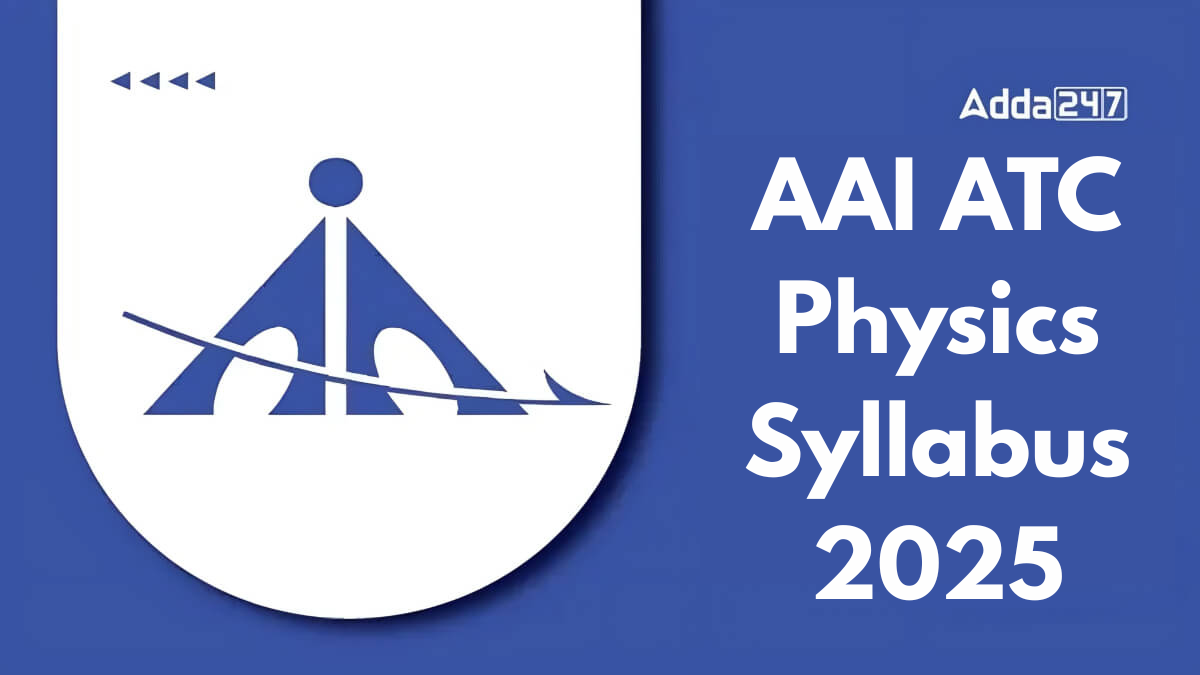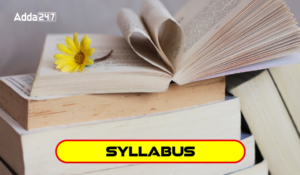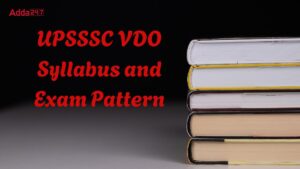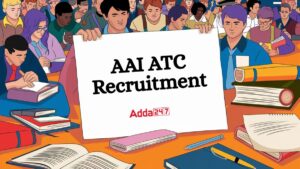Table of Contents
The Airports Authority of India (AAI) conducts recruitment exams for the post of Junior Executive (Air Traffic Control). The selection process includes an online examination that assesses candidates in various domains, including Physics. A solid understanding of Physics concepts is essential to succeed in the AAI ATC Exam 2025. This article provides a complete and structured breakdown of the AAI ATC Physics Syllabus 2025, enabling aspirants to plan their preparation effectively.
Overview of AAI ATC Physics Syllabus 2025
The Physics section of the AAI ATC exam is primarily based on the syllabus taught in Classes 11 and 12 under the CBSE/NCERT curriculum. The syllabus includes both theoretical and numerical topics. Below is the comprehensive topic-wise syllabus:
1. Units and Measurements
- SI units and systems of measurement
- Dimensions and dimensional analysis
- Significant figures
- Error analysis and types of errors
2. Kinematics
- Motion in a straight line and in a plane
- Displacement, velocity, and acceleration
- Graphical representation of motion
- Projectile motion
- Relative motion
3. Laws of Motion
- Newton’s Laws of Motion and their applications
- Inertia and mass
- Friction and types of friction
- Circular motion
- Equilibrium and free body diagrams
4. Work, Power and Energy
- Work done by a constant and variable force
- Kinetic and potential energy
- Work-energy theorem
- Conservation of mechanical energy
- Power and efficiency
5. Motion of System of Particles and Rigid Body
- Centre of mass and motion of the center of mass
- Linear momentum and impulse
- Collisions and types of collisions
- Torque, angular momentum, and rotational motion
- Moment of inertia and its calculation
6. Gravitation
- Newton’s law of gravitation
- Acceleration due to gravity
- Gravitational potential and field
- Escape velocity and orbital motion
- Satellites and their motion
7. Properties of Bulk Matter
- Mechanical properties of solids (elasticity, stress, strain)
- Mechanical properties of fluids (pressure, Pascal’s law)
- Surface tension and viscosity
- Bernoulli’s principle
8. Thermodynamics
- Temperature and heat
- Thermal equilibrium
- First and second laws of thermodynamics
- Specific heat and heat capacity
- Heat engines and refrigerators
9. Kinetic Theory of Gases
- Postulates of kinetic theory
- Pressure of an ideal gas
- Equation of state of ideal gases
- Degrees of freedom
- Specific heats and mean free path
10. Oscillations and Waves
- Simple harmonic motion (SHM)
- Damped and forced oscillations
- Resonance
- Wave motion, speed, and types of waves
- Sound waves and Doppler effect
11. Electrostatics
- Coulomb’s law and electric field
- Electric potential and potential energy
- Gauss’s law and its applications
- Capacitors and dielectric materials
- Combination of capacitors
12. Current Electricity
- Electric current, resistance, and Ohm’s law
- Series and parallel circuits
- Kirchhoff’s laws and their applications
- Electrical energy and power
- Potentiometer and Wheatstone bridge
13. Magnetic Effects of Current and Magnetism
- Magnetic field and magnetic force
- Biot–Savart law and Ampere’s circuital law
- Magnetic dipole and torque
- Earth’s magnetism
- Magnetic properties of materials
14. Electromagnetic Induction and Alternating Current (EMI and AC)
- Faraday’s laws and Lenz’s law
- Induced emf and current
- Eddy currents and mutual induction
- AC circuits with resistor, inductor, and capacitor
- Power in AC circuits and resonance
15. Electromagnetic Waves
- Electromagnetic spectrum
- Displacement current
- Properties of EM waves
- Applications of different spectrum ranges
16. Optics
- Reflection and refraction
- Lenses and mirrors
- Total internal reflection
- Optical instruments
- Interference, diffraction, and polarization
17. Dual Nature of Matter and Radiation
- Photoelectric effect and laws
- Einstein’s photoelectric equation
- de Broglie hypothesis
- Applications and limitations of the theory
18. Atoms and Nuclei
- Bohr’s model of hydrogen atom
- Energy levels and spectral series
- Radioactivity and nuclear reactions
- Alpha, beta, and gamma decay
- Nuclear fission and fusion
19. Semiconductor Electronics
- Classification of materials
- Intrinsic and extrinsic semiconductors
- Diodes and transistors
- Logic gates and basic digital electronics
- Application in communication systems
Preparation Strategy for Physics in AAI ATC 2025
- Build Conceptual Clarity: Focus on understanding the fundamentals from NCERT textbooks or standard reference books.
- Practice Numerical Problems: Regularly solve numerical questions to strengthen problem-solving skills.
- Revise Formulas: Create a formula sheet for quick reference and practice applying them to different types of problems.
- Use Previous Year Papers: Analyze previous year AAI ATC exam papers to understand the pattern and difficulty level.
- Take Mock Tests: Attempt full-length mock tests and sectional quizzes to enhance speed and accuracy.
Conclusion
The AAI ATC Physics Syllabus 2025 covers a wide range of topics from classical to modern physics. A thorough understanding of each topic, combined with consistent practice and revision, can help candidates perform well in the technical section of the examination. As the competition level remains high, a focused and structured preparation strategy is essential to gain an edge.
Aspirants are advised to regularly check the official AAI website for any updates related to the syllabus or exam pattern.





 NVS Non-Teaching Exam Pattern 2025
NVS Non-Teaching Exam Pattern 2025
 UPSSSC VDO Syllabus 2025, Exam Pattern a...
UPSSSC VDO Syllabus 2025, Exam Pattern a...
 AAI ATC Recruitment 2025, Apply Online F...
AAI ATC Recruitment 2025, Apply Online F...


